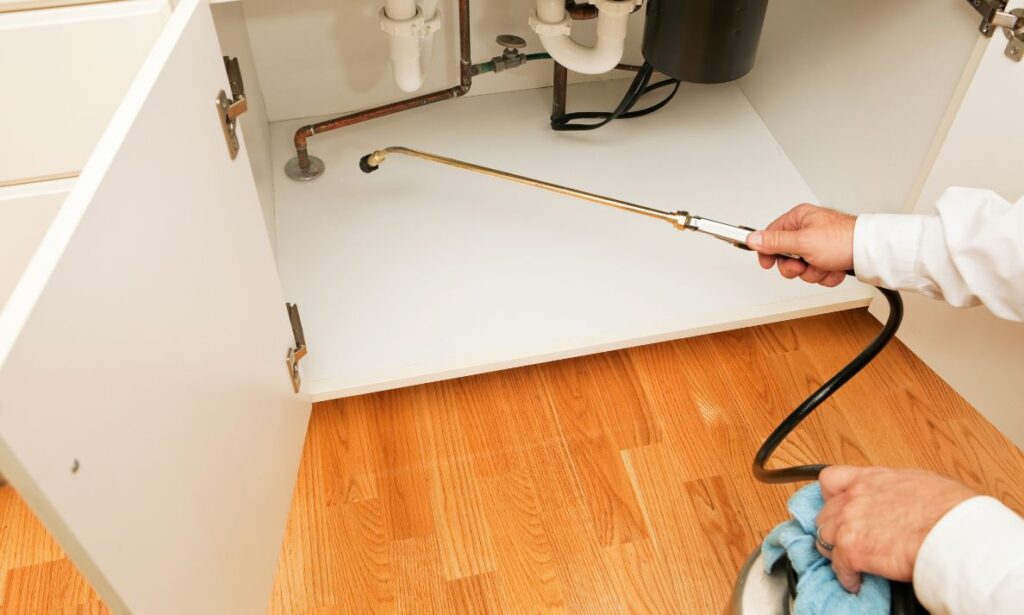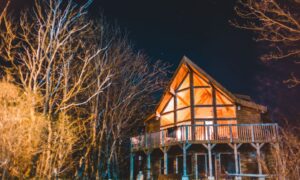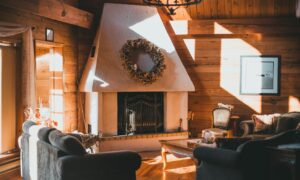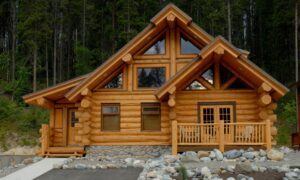Here’s What You’ll Learn in This Article
This article highlights the importance of pest-proofing log cabins to protect their beauty and structural integrity. You’ll learn about common threats like termites, carpenter ants, beetles, and rodents, as well as preventive strategies using kiln-dried logs, borate treatments, sealing, and proper maintenance. It also covers eco-friendly control options, professional pest services, and early warning signs of infestation. With these best practices, homeowners can ensure their log cabins remain strong, safe, and pest-free for generations.
Introduction
Owning a log home comes with timeless charm and a deep connection to nature, but it also means dealing with a unique set of maintenance challenges. One of the most crucial tasks every homeowner must prioritize is learning how to pest proof log cabin structures. From wood-boring insects to rodents, these unwanted visitors can threaten the integrity and longevity of your home if not managed properly.
In this guide, we at Caribou Log Homes share expert strategies to keep your log cabin safe, secure, and pest-free for generations.
Why Pest-Proofing Matters for Log Homes
Unlike conventional houses built with drywall and siding, log cabins rely heavily on natural wood. While this creates unmatched beauty, it also makes your cabin more vulnerable to pests like termites, carpenter ants, and powderpost beetles.
According to the National Pest Management Association, termites alone cause more than $5 billion in property damage annually in the U.S., and most of it is not covered by insurance.
Proactively pest-proofing your cabin not only preserves your investment but also ensures a healthier, safer living environment.
Common Pests That Threaten Log Cabins
1. Termites
Known as “silent destroyers,” termites feed on cellulose in wood. Without early detection, they can hollow out logs, weakening your home’s foundation.
2. Carpenter Ants
Unlike termites, carpenter ants don’t eat wood but burrow through it to create nests. Over time, this damages structural integrity.
3. Powderpost Beetles
These beetles infest exposed wood, laying eggs that hatch into larvae. The larvae bore tunnels, leaving powdery residue behind.
4. Rodents
Mice and rats chew through insulation, wiring, and even logs while spreading harmful diseases.
5. Cluster Flies and Wasps
While less destructive than insects, these pests can cause annoyance and make your home uncomfortable.
Building Materials and Treatments that Deter Pests
One of the first steps in pest prevention starts with construction and finishing techniques.
- Kiln-Dried Logs: At Caribou Log Homes, we recommend kiln-dried logs, which reduce moisture levels that attract pests.
- Borate Treatments: Applying borate preservatives protects against insects like termites and beetles without harming the environment.
- Sealing Gaps: Using high-quality caulking and chinking materials helps block entry points for pests.
Exterior Maintenance for Pest Defense
Keeping the exterior of your cabin in top condition is essential.
1. Manage Moisture Levels
Excess moisture creates the perfect breeding ground for insects. Make sure your gutters and downspouts direct water away from your foundation.
2. Regular Staining and Sealing
A well-maintained stain acts as a protective barrier against weathering and pests. Sashco stains and sealants are widely used in the log home industry for long-term protection.
3. Landscaping for Pest Prevention
Trim trees and shrubs so they don’t touch your cabin. Wood piles should be stored at least 20 feet away from the home.
Interior Maintenance Practices
Pest-proofing isn’t just about the outside; your cabin’s interior also needs attention.
- Inspect and Clean Regularly: Check for sawdust-like material or small holes in wood that may indicate beetle activity.
- Rodent-Proof Storage: Keep dry food in sealed containers and maintain cleanliness in kitchens.
- Humidity Control: Use dehumidifiers in basements or crawlspaces to deter moisture-loving pests.
Pro Tips for Pest Prevention
Pro Tip #1: Schedule professional pest inspections annually to catch early signs of damage. Companies like Orkin and Terminix specialize in log home pest control.
Pro Tip #2: Apply borate treatments every 3–5 years to extend the protective life of your logs.
Pro Tip #3: Invest in mesh screens for vents and chimneys to keep rodents and insects out.
Eco-Friendly Pest Control Options
Many homeowners want to protect their cabins without resorting to harsh chemicals. Fortunately, eco-friendly pest control solutions are available.
- Essential Oils: Peppermint oil is known to repel rodents and ants.
- Nematodes: Beneficial nematodes, available from suppliers like Arbico Organics, help control soil-dwelling pests.
- Diatomaceous Earth: This natural powder damages insect exoskeletons and is safe for humans and pets.
Signs of a Pest Infestation
Detecting early warning signs can save thousands in repairs. Look out for:
- Sawdust piles near wooden beams
- Hollow-sounding logs
- Droppings or urine odor
- Chewed wiring or insulation
- Swarming insects near the foundation
If you notice these signs, professional inspection is recommended immediately.
The Role of Professional Pest Control
While DIY solutions can help, hiring a professional ensures thorough protection. Pest control companies bring expertise, specialized tools, and safe treatments that preserve your log home without damaging its structure.
Statistic: A study by IBISWorld found that the U.S. pest control industry generates over $20 billion annually, reflecting the demand for professional solutions.
Final Thoughts
At Caribou Log Homes, we believe that a well-built and well-maintained log home should last for generations. Learning how to pest proof log cabin structures is an essential part of ensuring that legacy. By combining smart construction practices, routine maintenance, eco-friendly methods, and professional services, you can protect your investment from the silent damage pests cause.
If you’re ready to start building or need advice on protecting your existing log home, our team is here to help. Contact Caribou Log Homes today to design a cabin that’s beautiful, functional, and resilient against pests.
FAQs
1. How often should I treat my log home with borates?
Every 3–5 years is generally recommended, but the frequency may vary depending on your climate and exposure levels.
2. Can natural oils really keep pests away?
Yes, oils like peppermint and cedar can deter rodents and insects, though they work best as supplemental measures rather than primary protection.
3. What’s the biggest threat to log cabins—termites or carpenter ants?
Both can cause damage, but termites are typically more destructive since they eat the wood directly.
4. Should I handle pest problems myself or hire a professional?
DIY methods work for minor issues, but professional services provide more thorough, long-term protection.
5. Does pest-proofing also help with energy efficiency?
Yes, sealing gaps and cracks for pest control also reduces drafts and helps maintain indoor temperature.





